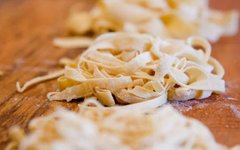
Pediatric Spleen-Strengthening and Digestion-Promoting Dietary Therapy
■Applicable for children with spleen and stomach deficiency, poor appetite, and weakness with low food intake. Commonly used herbs include Shan Zha (Hawthorn), Shan Yao (Chinese Yam), Shen Qu (Medicated Leaven), Mai Ya (Barley Sprouts), Fu Ling (Poria), and Lian Zi Rou (Lotus Seed). Foods used include radish, meat, and eggs.
Commonly Used Dietary Remedies:1. Radish Cakes: 250g white radish, 250g flour, 100g lean pork. Chop the meat and radish into filling, add scallions, ginger, salt, and MSG, make into cakes, and steam or pan-fry. Treats loss of appetite and post-meal bloating. 2. Hawthorn and Radish Pork Rib Soup: 50g hawthorn, 150g white radish, 100g pork ribs. First, cook the ribs, then add hawthorn and radish and cook until done. Suitable for loss of appetite and bloating. 3. Pork Tenderloin Congee: 100g pork tenderloin, 100g japonica rice, salt, sesame oil, and MSG to taste. Chop the tenderloin, cook with rice to make congee, then add seasonings. Beneficial for the stomach and appetite. 4. Peanut Congee: 45g peanuts, 100g japonica rice, rock sugar to taste, optionally add 30g yam or 15g lily, cook into congee. Strengthens the spleen and opens the appetite. 5. Lotus Seed Congee: 50g lotus seed, 100g japonica rice, cook into congee. Beneficial for the stomach and strengthens the spleen. 6. Yam Cakes: 200g yam, 50g chicken gizzard, grind into fine powder, add water to make 20 equal-sized cakes, bake until done, consume 1 each time, 2 times a day. Aids digestion and strengthens the spleen. Suitable for those with spleen deficiency and low food intake.
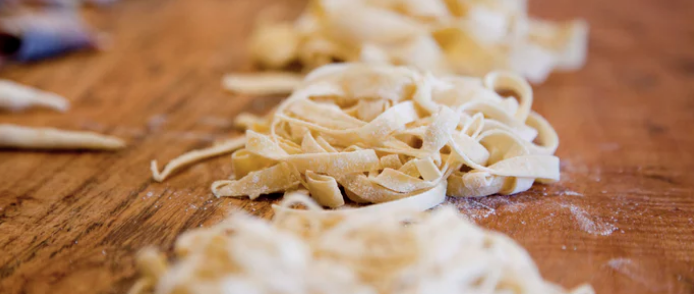
Pediatric Spleen-Strengthening and Dampness-Removing Dietary Therapy
■ Foods that strengthen the spleen include: Jian Yu (Crucian Carp), carrots, apples, Huaishan (Chinese Yam), millet, lotus seeds, Xian Shi (Amaranth), pig stomach, duck, and quail. Foods that remove dampness include: Li Yu (Carp), Chi Xiao Dou (Adzuki Bean), Jin Zhen Cai (Day Lily), Lo Ba (Lettuce), Yi Yi Ren (Job’s Tears), Bian Dou (Lima Bean), and winter melon.
1. Adzuki Bean and Winter Melon Soup with Fresh Fish: Nourishes the spleen, promotes urination, and reduces swelling, acting to nourish the spleen without retaining pathogens, and promote urination without harming the righteous qi. One fresh fish, cleaned, 500g winter melon (with skin), 60g adzuki beans, 5 scallions, boil into soup without salt. 2. Amaranth and Old Duck Soup: Nourishes yin, supports the stomach, strengthens the spleen, and promotes urination.
Amaranth 100-120g, one old duck, cleaned, place amaranth in the duck’s belly, add water, and simmer on low heat for 2 hours, add a little salt to serve.
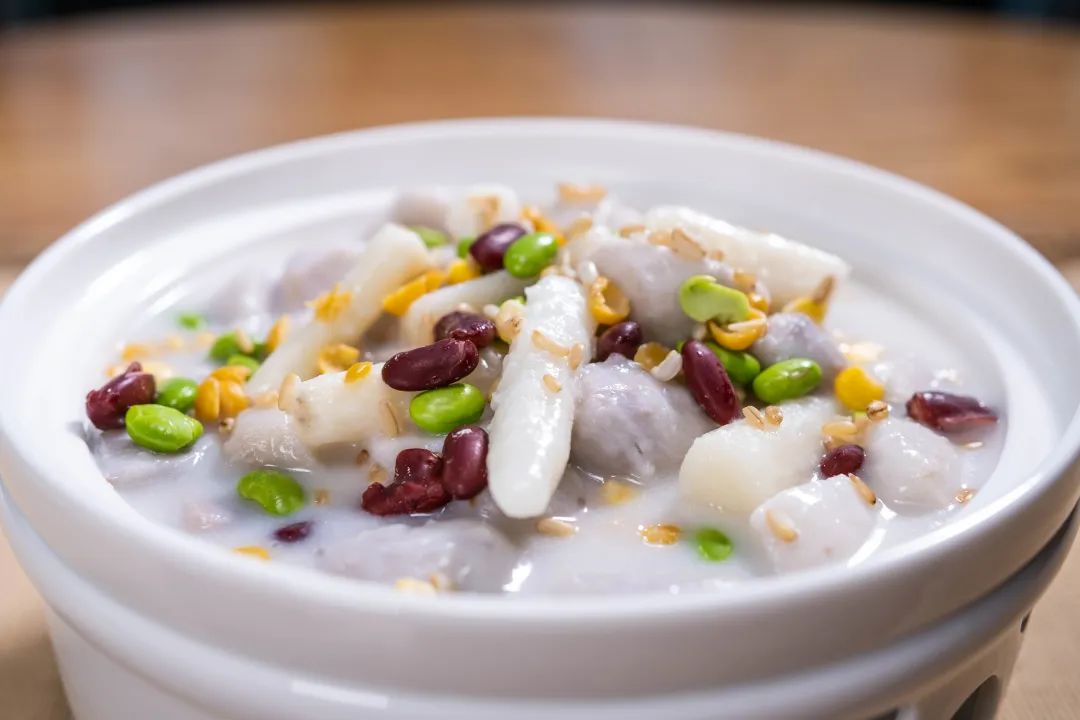
Pediatric Anorexia Dietary Therapy
1. Pear Congee: Pears are sweet and slightly sour, with functions of clearing heat, generating fluids, moistening dryness, and resolving phlegm. They contain organic acids such as malic acid and citric acid, as well as glucose, sucrose, fructose, and vitamins B1, B2, B5, and C. When used with japonica rice, it enhances the effects of clearing heat, generating fluids, and nourishing the stomach. It treats symptoms caused by insufficient stomach fluids in children, and can also adjust irritability, dry mouth, thin tongue coating, and constipation. Ingredients: 3 fresh pears, 100g japonica rice.
Preparation: Wash the pears, chop them with skin, remove the core, add appropriate water, and simmer on low heat for 30 minutes, remove the pear pieces, add washed japonica rice, and cook into congee. The pear can also be used with the core, but the seeds must be removed, as the pear core has strong nutritional and therapeutic effects.
2. Grape Juice: Grapes are sweet, slightly sour, and neutral, capable of nourishing the liver and kidneys, benefiting qi and blood, and fresh grapes can also generate body fluids. The main components include glucose, fructose, sucrose, xylose, tartaric acid, malic acid, proteins, various amino acids, carotene, calcium, potassium, phosphorus, iron, and vitamins B1, B2, B6, C, and P. Grape juice is suitable for children with developmental delays and anorexia. These children are often noticeably smaller than their peers, with pale complexions and sparse hair. The juice can be consumed without strict requirements, ideally 1-2 times every 1-2 days, and should be taken long-term for effectiveness. Ingredients: Several fresh grapes.
Preparation: Wash the grapes, air dry to remove excess water, wrap in clean gauze, and squeeze out the juice for consumption.
3. Tomato Juice: Tomatoes are sweet and sour, slightly cold, with functions of generating fluids, quenching thirst, and aiding digestion. They contain sugars, acids, minerals, and various nutrients. Each serving should be 50-100ml, taken 2-3 times a day, suitable for treating anorexia in infants due to insufficient stomach yin or after fever. Ingredients: Several tomatoes. Preparation: Wash fresh tomatoes, soak in boiling water for 5 minutes, remove the skin, wrap in clean gauze, and squeeze out the juice for consumption. This juice should not be sweetened. Characteristics: Fresh, fragrant, and slightly sweet.
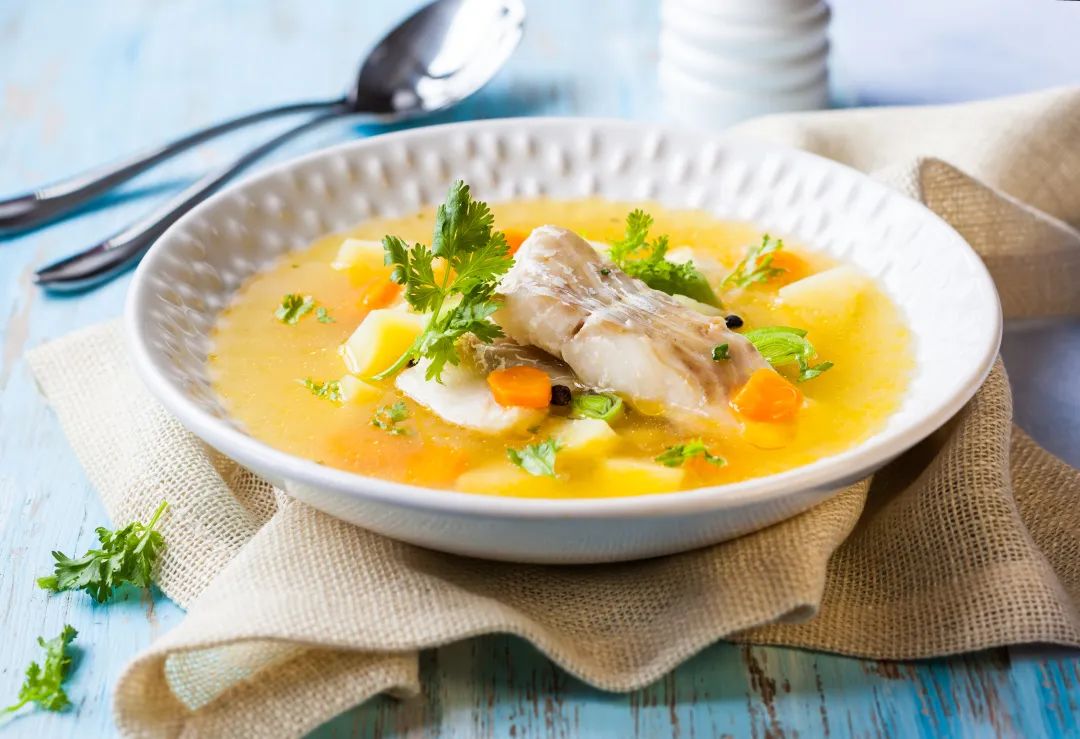
Three Beneficial Dishes to Improve Anorexia
1. Stewed Tremella with Meat: Ingredients: 40g tremella, 100g lean meat, 10 jujubes. Appropriate salt. Preparation: Soak the tremella, slice the lean meat, and stew with jujubes until tender, then add appropriate salt. This dish is sweet and mild, rich in gelatin and various vitamins, nourishing yin and benefiting the stomach; lean meat and jujubes can nourish the spleen and benefit qi, harmonizing to strengthen the spleen and benefit qi, nourishing yin and generating fluids. Beneficial for those with insufficient spleen qi and anorexia.
2. Candied Hawthorn: Ingredients: 500g fresh hawthorn, 250g honey. Preparation: Take high-quality hawthorn, remove stems and seeds, wash clean, boil in an aluminum pot with appropriate water until cooked, when the water reduces, add honey, and simmer on low heat for 5-10 minutes, cool after removing from heat. Chewing 3-5 pieces before meals can enhance appetite; chewing 3-5 pieces after meals can aid digestion. Opens the appetite and aids digestion, suitable for children who are disinterested in food or have overeating issues leading to indigestion.
3. Crucian Carp Soup: Ingredients: 1 crucian carp, 30g ginger, 1g pepper. Preparation: Clean the crucian carp, slice the ginger, and place them inside the fish, add water and stew until cooked. Drink the soup and eat the fish, once a day for a week, suitable for children with anorexia.
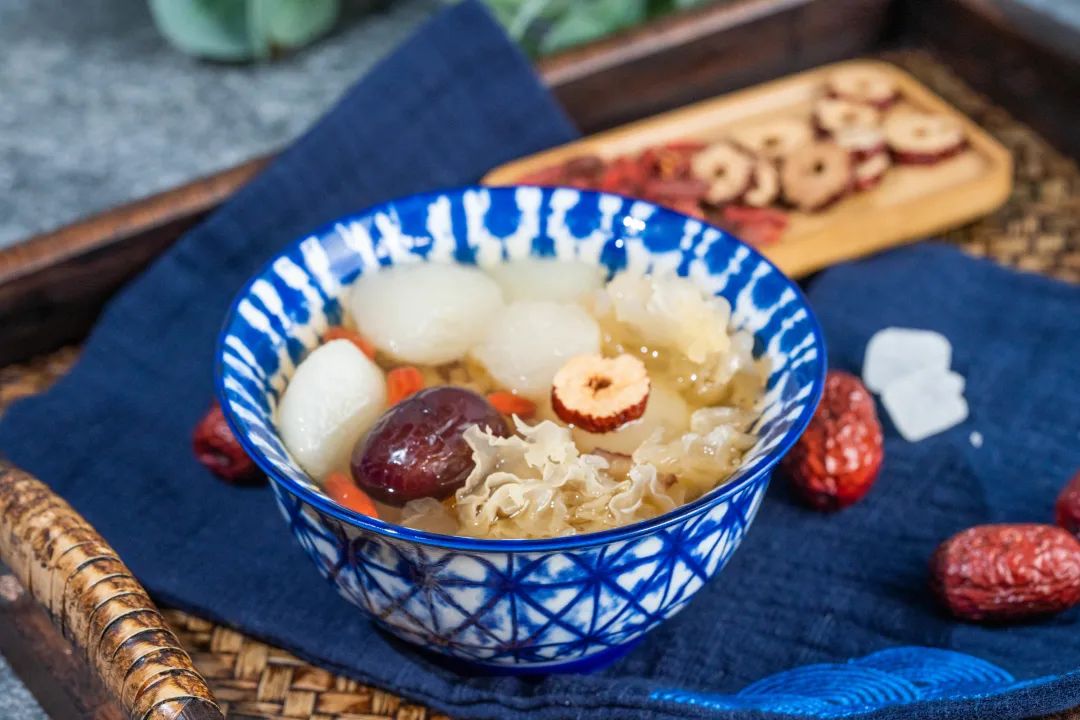
Pediatric Cold Dietary Therapy
1. Cabbage and Mung Bean Drink: Cabbage contains vitamins B1, B2, C, B6, and carotene, calcium, phosphorus, iron, etc., with a sweet taste and slightly cold nature, nourishing taste and generating fluids, clearing heat and relieving irritability, promoting urination, and clearing the intestines. The root of the cabbage has a more pronounced effect. Mung beans are sweet and cool, capable of clearing heat and relieving irritability, promoting urination, and detoxifying. This soup mainly has a heat-clearing and detoxifying effect. It is used for children with wind-cold colds, sweating without relief, feeling heavy and hot, thirsty, and short red urine. Ingredients: Several cabbage roots, 30g mung beans, appropriate sugar.
Preparation: First, wash the mung beans, place them in a pot with water, and boil until half-cooked; then wash the cabbage roots, slice them, and add to the mung bean soup, cooking until the mung beans bloom and the cabbage roots are soft, then serve with sugar to taste. Characteristics: Fragrant and sweet, mung beans can be eaten.
2. White Radish Stewed with Pork Ribs: White radish is known as a substitute for ginseng, indicating its rich nutrition, and has the effects of nourishing the heart, promoting qi, and invigorating blood. For children with colds, coughs, and phlegm, consuming this dish (or soup) can yield immediate effects. Ingredients: 1000g pork ribs, 500g white radish, appropriate scallions, ginger slices, cooking wine, pepper, and salt. Preparation: 1. Cut the pork ribs into small pieces, blanch in boiling water, rinse with cold water, and return to boiling water with scallions, ginger, cooking wine, and pepper, simmering for 90 minutes, then remove the bones; peel and cut the white radish into strips, blanch in boiling water to remove the raw taste. 2. Continue boiling the pork rib soup, add the ribs and radish strips, and stew for 15 minutes until the meat is tender and the radish is soft. Characteristics: Fragrant radish flavor, delicious pork, and fresh soup.
3. Lily, Pear, and White Lotus Root Soup: Pears are sweet, slightly sour, and cool, with functions of generating fluids, quenching thirst, broadening the chest, relieving irritability, nourishing yin, reducing fire, clearing heat, and resolving phlegm. The “Compendium of Materia Medica” states: “Pear juice cooked into congee treats children’s heat and wind-heat dryness.” This soup also contains lotus root, which can clear heat and relieve irritability. The “Compendium of Materia Medica” states that lily “clears phlegm-fire and supplements deficiencies.” The combination of these three ingredients can treat children with colds, coughs, etc. Ingredients: 200g fresh lily, 2 fresh pears, 250g white lotus root, a little salt. Preparation: 1. Wash the fresh lily and tear it into small pieces; wash the lotus root, remove the nodes, and cut into small pieces, boil for about 10 minutes, then add salt to taste. 2. Place the pears and white lotus root in clean water and simmer for 2 hours, then add the fresh lily pieces and cook for about 10 minutes, adding salt to taste. Characteristics: Fragrant and moist, slightly salty, sour, and sweet.
4. Tofu and Scallion Soup: Tofu is rich in nutrition, known as “plant meat.” Tofu is sweet and slightly cold, capable of benefiting the spleen and stomach, clearing heat, moistening dryness, promoting urination, and detoxifying. Scallions are pungent and warm, with effects of inducing sweating and detoxifying. This soup has the effects of dispelling cold and clearing heat. It is used to treat children with external wind-cold, internal stomach heat, sore throat, and hoarseness. Ingredients: 2 blocks of fresh tofu, 2-4 scallions, a little oil, ginger slices, soy sauce, sesame oil, and MSG. Preparation: Cut the tofu into small blocks or strips, soak in clean water for half an hour, fry in oil, add appropriate clean water, ginger slices, and soy sauce, boil, then simmer for 20 minutes, add chopped scallions, bring to a boil, and drizzle with sesame oil and sprinkle with MSG to finish. Characteristics: Fresh, tender, fragrant, and appetizing, served with tofu and soup after meals.
5. Perilla Congee: Perilla leaves are pungent and warm, with effects of dispelling cold, relieving the exterior, promoting qi, and broadening the middle. Perilla leaves can expand capillaries, stimulate sweat secretion, and have inhibitory effects on influenza viruses. Cooking perilla leaves with japonica rice has the effect of harmonizing the stomach and dispelling cold. It is effective for weak infants and those prone to colds due to wind-cold. Ingredients: 6g perilla leaves, 50g japonica rice, appropriate brown sugar. Preparation: 1. Wash the japonica rice with clean water. In a clay pot, add appropriate water, place the perilla leaves, boil for one minute, strain to obtain the juice. 2. In another pot, add water, bring to a boil, add the japonica rice to cook congee, and when the congee is ready, add the perilla leaf juice and brown sugar, stir well to finish.
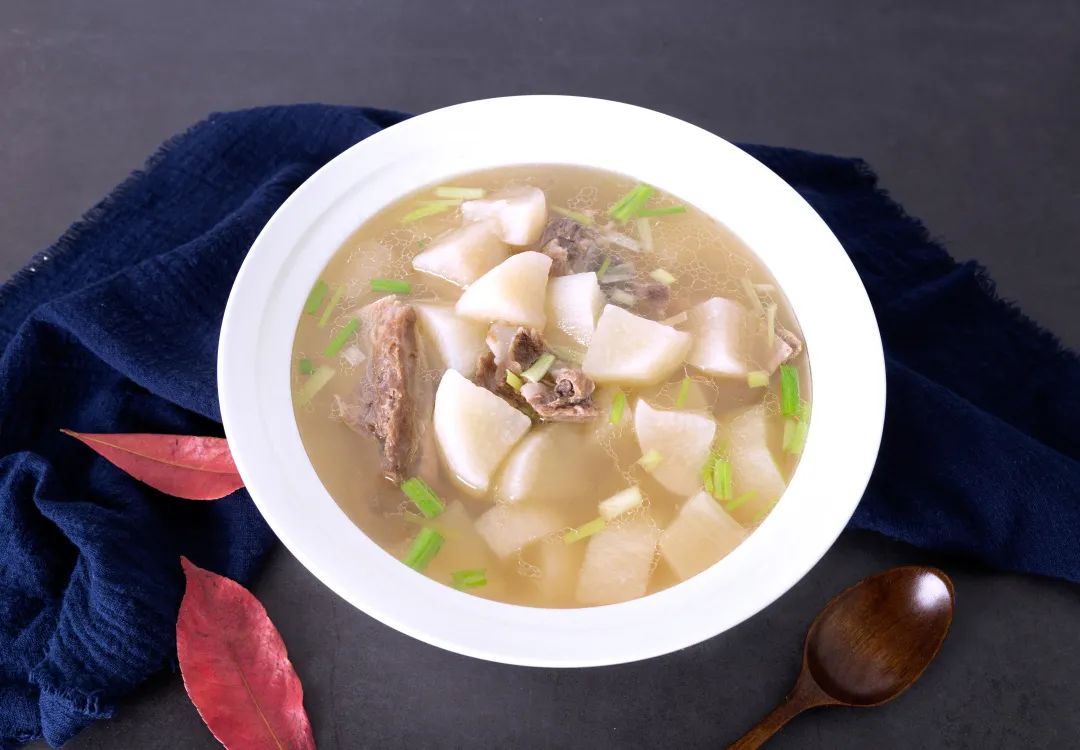
Dietary Recipes for Children with Colds
1. Staple Food: 1. Jujube Congee: 10 jujubes, 50g japonica rice, appropriate rock sugar. 2. Radish Cakes: 250g white radish, 250g flour, 100g lean pork, ginger, scallions, salt, and vegetable oil to taste. Preparation: Use radish, meat, and seasonings to make filling with flour to make cakes, fry until cooked.
2. Dishes: 1. Colorful Tofu Stew: Tofu, carrots, peas, sweet corn, greens, celery, ginger, scallions, and sesame oil to taste. Preparation: Cut tofu and carrots into cubes, set aside; blanch tofu cubes, peas, sweet corn, and carrot cubes in boiling water; heat oil in a pot, add ginger slices to sauté, add appropriate broth, add blanched vegetables, simmer on low heat for 3 minutes, season and thicken, then drizzle with sesame oil to finish.
2. White Mushrooms + Eggs: 200g white mushrooms, 3 eggs. Preparation: Clean the white mushrooms, blanch in boiling water. Chop scallions, set aside; scramble the eggs, add white mushrooms, season, and stir-fry, then sprinkle with scallions to finish. Beverages: Fresh orange juice, watermelon juice, tomato juice, light tea, etc.
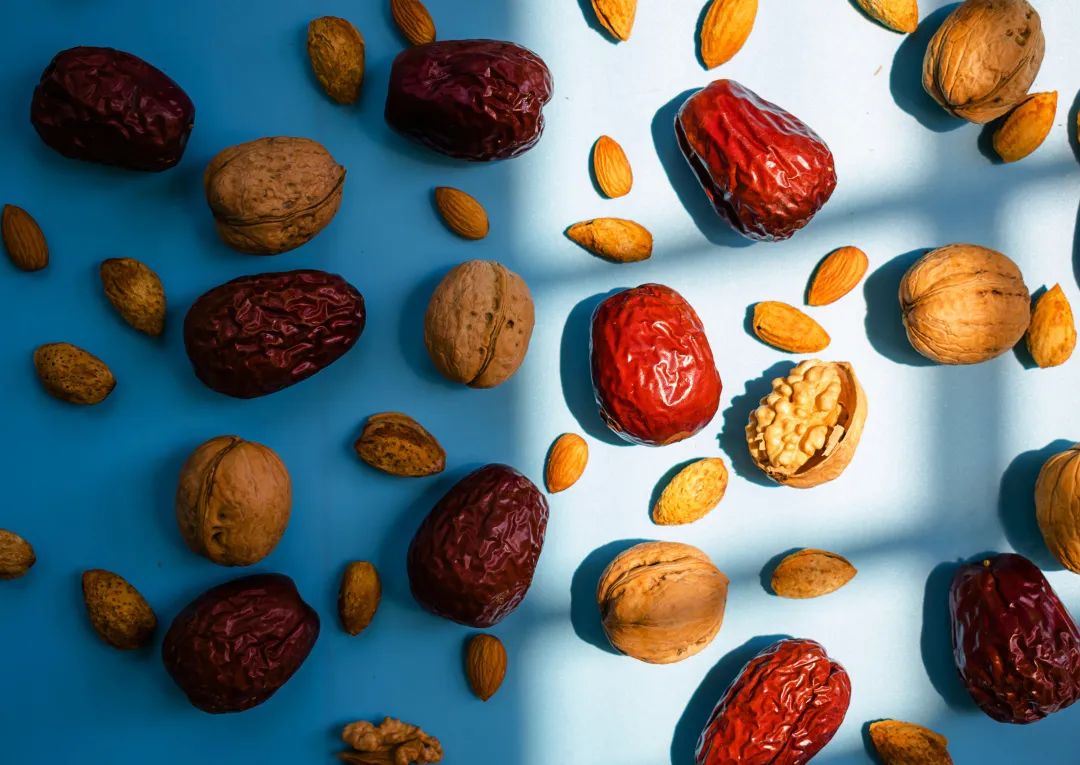
Pediatric Sweating Syndrome Dietary Therapy
1. Astragalus, Longan, and Lamb Soup: Lamb is sweet and warm, nourishing blood and qi, warming the middle and kidneys, rich in protein, with good nourishing and strengthening effects; longan nourishes yin, nourishes blood, and benefits the heart; astragalus benefits qi and stabilizes the exterior. The combination of these three has auxiliary therapeutic effects for children prone to colds and sweating. Take once in the morning and evening, warm.
Ingredients: 15g astragalus, 10g longan meat, 100g lamb. Preparation: 1. Clean the lamb, cut into pieces, blanch in boiling water. 2. Clean the astragalus and longan, place in a pot, add appropriate water, bring to a boil, add lamb pieces, and simmer on low heat until the lamb is tender, resulting in a thick soup. Depending on the child’s preference, salt or sugar can be added to make it savory or sweet, making it much tastier than plain soup.
Characteristics: Fresh meat, thick soup, with a slight herbal taste.
2. Floating Wheat and Jujube Congee: Floating wheat is the immature fruit of wheat, washed in water, with the floating ones being the best. It mainly contains a large amount of starch and B vitamins, with a sweet and cool nature, having a sweating effect, used to treat spontaneous sweating and night sweats, preventing excessive loss of fluids. Glutinous rice is sweet and slightly warm, benefiting the spleen and stomach, and nourishing spleen qi. The combination of these three in this congee can solidify the exterior, stop sweating, and nourish the stomach and strengthen the spleen. Take warm once in the morning and evening. Ingredients: 50g floating wheat, 6 jujubes, 60g glutinous rice.
Preparation: Wash the floating wheat, jujubes, and glutinous rice, remove impurities, place in a pot, add appropriate water, first boil on high heat, then medium heat, and finally simmer to make congee. Characteristics: The congee is sticky and soft, slightly sweet, and can be sweetened for infants.
3. Asparagus Congee: Asparagus is slightly bitter, cold, and non-toxic, used in TCM to nourish the kidneys. Cooking asparagus with japonica rice into congee nourishes yin, relieves irritability, and generates fluids. For children with low-grade fever in the afternoon, night sweats, and phlegm with blood, consuming this for 2 courses can yield effects. Each course lasts 3-5 days, with a 3-day interval between courses. Ingredients: 15-20g asparagus, 30-60g japonica rice, appropriate rock sugar.
Preparation: Wash the asparagus, boil to extract the juice, remove the residue, then wash the japonica rice and cook in the asparagus juice, adding rock sugar when the congee is almost done, simmer for a while to finish.
Characteristics: The congee is soft and slightly sweet.
4. Shan Yu Meat Congee: Shan Yu meat is sour, astringent, and slightly warm, a good medicine for nourishing the liver and kidneys. It contains malic acid, tartaric acid, and vitamin A, and when cooked with rice, it has the effects of benefiting the liver and kidneys and stopping sweating. Especially effective for children with insufficient liver and kidney function, developmental delays, and frequent sweating. Ingredients: 20g Shan Yu meat, 60g japonica rice, appropriate sugar. Preparation: First, wash the Shan Yu, remove the pit, and cook with the washed japonica rice in a clay pot, adding water to cook until the congee is done, then add sugar and simmer slightly to finish. Characteristics: The congee is soft and slightly sweet, appealing to children.

Pediatric Eczema Dietary Therapy
1. General’s Egg: Da Huang (Rhubarb) is bitter and cold, known for its downward action, hence the name “General’s Egg,” capable of clearing heat, detoxifying, and moistening dryness. Eggs can harmonize and flavor. This General’s Egg is effective for children with heat-induced eczema, dry or foul stools.
Ingredients: 1 egg, 1.5g rhubarb powder. Preparation: First, make a small hole at the top of the egg, remove the shell, add rhubarb powder, stir with chopsticks, then seal the hole with paper or flour and water, and boil in water until cooked. Characteristics: The egg has no strange taste, suitable for children.
2. Honeysuckle Honey Rice Pudding: Almonds, mung beans, and honey are excellent for cooling, detoxifying, and clearing heat. Children are prone to pustular sores and eczema in summer; consuming this can clear heat and dampness, nourish blood, dispel wind, inhibit various bacteria and viruses from harming the skin, relieve itching, moisten dryness, clear fire, detoxify, and kill parasites. Ingredients: 50g almonds, 100g mung beans, 100g japonica rice, 100g glutinous rice, 100g honeysuckle, 200g honey, a little alum. Preparation: 1. Soak mung beans in cold water for an hour, then cook until soft, remove the skin (add a little alum while cooking); soak almonds in boiling water, remove the skin, and grind; soak japonica and glutinous rice in cold water for an hour, then grind; soak honeysuckle in boiling water for an hour, and use the juice.
3. Ku Shen Egg: Ku Shen can clear heat and detoxify; eggs moisten dryness, harmonize the stomach, and detoxify. This soup can clear heat, remove dampness, and detoxify. It is suitable for infants and young children with eczema and milk rash. Ingredients: 1 egg, 30g Ku Shen, 30g brown sugar. Preparation: First, boil Ku Shen to extract the juice, remove the residue, then add the beaten egg and brown sugar, and cook until done. Drink the soup once a day for 6 days.
Characteristics: Although this soup has a bitter taste, the sweetness of sugar and the aroma of eggs make it acceptable for infants.
4. Mung Bean Congee: Mung beans are cool and sweet, with strong medicinal properties, capable of clearing heat, cooling blood, promoting urination, and detoxifying, suitable for those with eczema, especially for those with fever, red rashes, excessive urination, dry stools, and a red tongue with yellow coating. Ingredients: 30g mung beans, appropriate japonica rice, a little rock sugar. Preparation: Wash the japonica rice and mung beans separately, cook in water until the congee is done, then add rock sugar to taste. It can also be made by boiling mung beans in water until soft.
Characteristics: The congee is soft, with a sweet taste after adding sugar, appealing to children.
5. Coix Seed Drink: This drink has effects of clearing heat, promoting urination, and strengthening the spleen, suitable for children with eczema to consume regularly, once a day (dosage depending on the child’s size), divided into several servings. Ingredients: 30g coix seeds, appropriate rock sugar. Preparation: Soak coix seeds (large and plump, white in color) overnight to remove the unique odor, then drain, add 8 times the water, and simmer in a clay pot until soft, adding appropriate rock sugar. This drink can also be cooked with japonica rice for congee, with effects similar to coix seeds. Characteristics: Sweet, fragrant, soft, and delicate without any unpleasant odor.
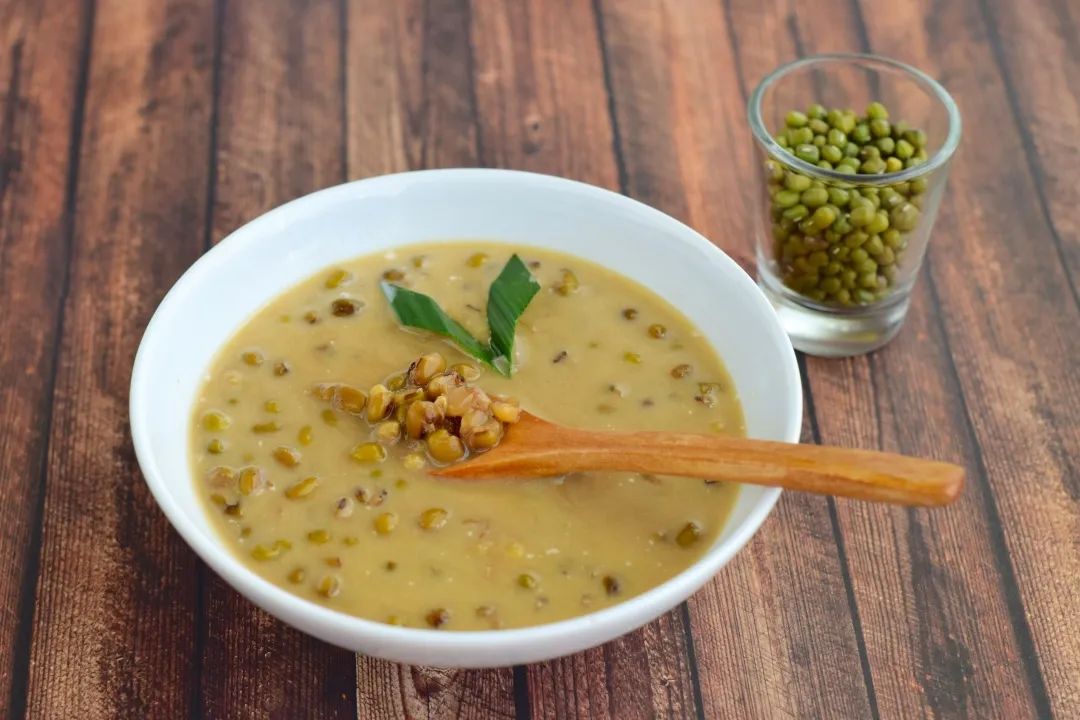
Pediatric Parasitic Disease Dietary Therapy
1. Tofu and Choy Sum: Choy sum is rich in protein and various vitamins, with effects of disinfecting and detoxifying, promoting blood circulation. This dish is effective for treating painful swelling, blood dysentery, vomiting blood, and intestinal obstruction due to roundworms. Ingredients: 400g choy sum, 100g tofu, 25g shiitake mushrooms, 25g winter bamboo shoots, 20g scallions, 10g cooking wine, 10g starch, appropriate salt, ginger, and oil, 100g soybean sprout soup, 5g sesame oil, a little MSG. Preparation: 1. Cut scallions into sections; clean shiitake mushrooms and winter bamboo shoots, peel and slice; clean choy sum, removing leaves, keeping the tender hearts. 2. Mash the tofu, mix with shiitake mushrooms, winter bamboo shoots, salt, MSG, cooking wine, and sesame oil, steam for 10 minutes, then serve with choy sum arranged around it.
2. Hainan Coconut Chicken Soup: Coconut meat and juice can expel roundworms and pinworms; walnuts nourish the brain; chicken is rich in nutrition. Children suffering from parasitic infections can consume this soup to expel parasites and strengthen their bodies. Ingredients: 1 coconut, 1 chicken (about 600g), 10g ginger slices, 50g walnuts, 50g jujubes, about 1500g water, a little salt. Preparation: 1. Clean the chicken, remove the skin, blanch in boiling water for about 5 minutes, cut into large pieces; soak walnuts in water to remove the oily taste; wash and pit jujubes; extract coconut juice and cut the meat into pieces. 2. Place chicken, ginger slices, walnuts, jujubes, coconut juice, and coconut meat in 10 bowls of boiling water, add ginger slices, bring to a boil, then simmer for 3 hours, adding salt to taste. Characteristics: Sweet and fragrant, with a strong coconut flavor.
3. Pumpkin Rice: Pumpkin contains vitamins A, B1, B2, C, carotene, and protein, with effects of expelling roundworms and tapeworms. This dish is suitable for infants over 6-9 months. Ingredients: 1 slice of pumpkin, 50g rice, 1 leaf of cabbage, appropriate salt, oil, and broth. Preparation: 1. Peel the pumpkin, cut into small pieces. 2. Wash the rice, soak in broth, place in a rice cooker, and when the water boils, add pumpkin pieces and cabbage leaves, cooking until the rice and pumpkin are soft, adding a little oil and salt to taste. Characteristics: Soft and slightly salty, suitable for consumption.
4. Shijunzi Steamed Meat: This dish can treat children’s intestinal roundworms and malnutrition. Whenever infants and young children show symptoms of loss of appetite, pale complexion, gradual weight loss, abdominal distension and pain, thirst, and irritability, this dish can be consumed for noticeable effects. Ingredients: 5-10g shijunzi, 100g lean pork, a little salt. Preparation: 1. Remove the shell from shijunzi, set aside the meat. 2. Chop the shijunzi meat and lean pork together, add a little salt, form into a meat patty. 3. Place the shijunzi meat patty in a dish, steam over boiling water until cooked or steam while cooking congee. Characteristics: The combination of the two meats is delicious, with a fragrant and salty taste.
5. Coconut Pudding: Coconut juice and meat contain protein, fructose, glucose, sucrose, fat, vitamins B1, E, C, potassium, calcium, magnesium, etc. Coconut meat is white and fragrant, while coconut juice is cool and sweet, and coconut pudding has these characteristics and contains various nutrients. TCM believes that coconut juice and meat are sweet, neutral, and non-toxic, beneficial for generating fluids, expelling parasites, and other effects. Children with tapeworms, roundworms, and pinworms can drink coconut juice or eat coconut meat on an empty stomach every morning, waiting two hours before eating. Consuming 1-2 coconuts daily for several days can have a parasitic expelling effect. Ingredients: 170g coconut meat, 60g sugar, 2 eggs, 15g flour, 30g melted butter, 60g milk, 15g baking powder, a little sesame oil.
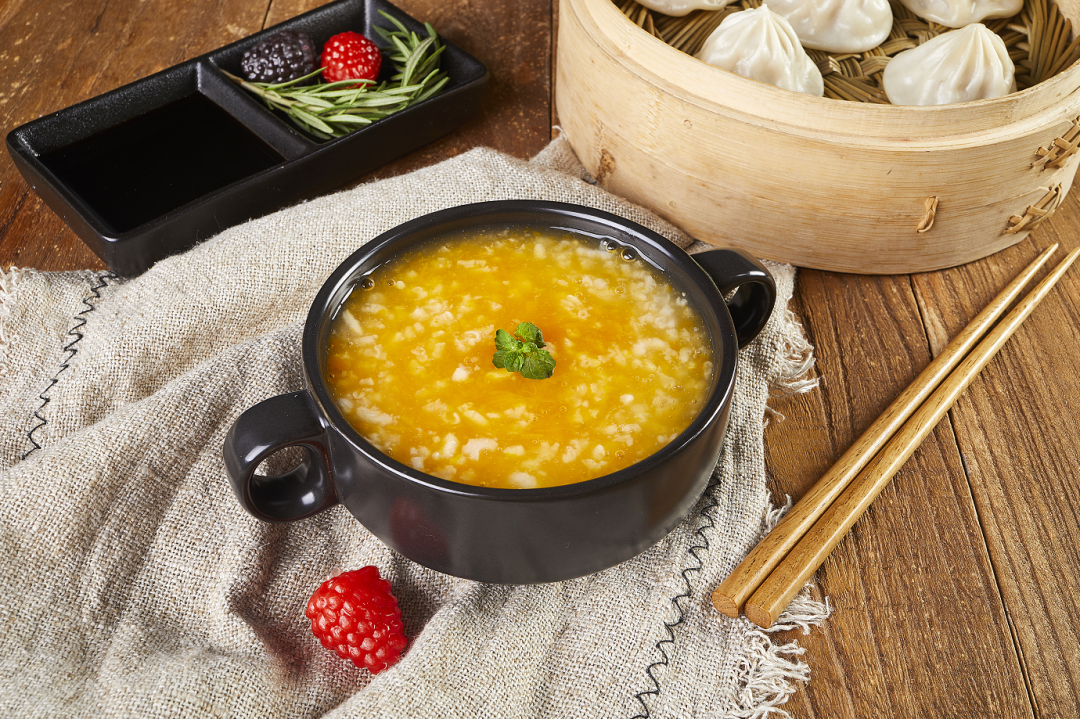
Pediatric Anemia Dietary Therapy
1. Chicken Broth Congee: Chicken is sweet, slightly warm, capable of warming the middle, benefiting the spleen, nourishing qi and blood, and enriching the kidneys, containing protein, fat, calcium, phosphorus, iron, magnesium, potassium, sodium, and vitamins. Cooking chicken broth with japonica rice into congee has significant effects of benefiting the spleen, nourishing yin, and strengthening the body, treating young children with weakness, insufficient qi and blood, and malnutrition, preventing and treating anemia.
Ingredients: 1 hen (about 1000g), 60g japonica rice. Preparation: Clean the chicken, remove the internal organs and feathers, wash, place in a pot with water, and boil to extract the chicken broth, then use the broth to cook the japonica rice. Boil on high heat first, then switch to low heat.
Characteristics: The congee is fresh and soft, with a strong chicken flavor. 2. Pork Loin Congee: Pork loin refers to the lean meat on the back of the pig, which has been used as medicine since ancient times. Its flavor is sweet, salty, and neutral. Lean pork is rich in protein and contains more carbohydrates, calcium, phosphorus, and iron, preventing malnutrition. This congee nourishes the body, and regular consumption by children can prevent anemia. Ingredients: 100g pork loin, 100g japonica rice, a little salt, sesame oil, and pepper powder. Preparation: First, wash the pork loin, cut into small pieces, sauté in sesame oil, then add japonica rice to cook congee, adding salt and pepper powder to taste when the congee is almost done. Characteristics: The congee has a delicious flavor from the meat and sesame oil.
3. Stir-Fried Chives with Lamb Liver: Lamb liver is sweet and neutral, beneficial for nourishing blood and improving vision; chives are sweet and pungent, warm, capable of benefiting the kidneys and assisting yang, warming the middle, and stimulating appetite, containing volatile oils, sulfides, glycosides, proteins, calcium, phosphorus, and iron. This dish can benefit the liver, warm the kidneys, nourish blood, and improve vision. Ingredients: 100g chives, 120g lamb liver, appropriate cooking oil, ginger, scallions, soy sauce, and MSG. Preparation: 1. Clean the chives and cut into small sections; clean the lamb liver, remove membranes, and slice. 2. Heat oil in a pan, sauté ginger and scallions until fragrant, add lamb liver slices and stir-fry briefly, then add chives and soy sauce, stir-fry quickly until cooked, adding MSG to finish. Ensure the lamb liver is fully cooked to avoid any harmful bacteria; it can also be boiled first for safety. Characteristics: The liver is fresh and fragrant, cooked but not burnt.
4. Fresh Tomato Liver Steak: Infants are prone to anemia after six months of age, and this dish is rich in iron and vitamins, especially the liver, which is high in iron, helping to form hemoglobin in red blood cells. Suitable for babies aged 6-12 months and preschool children. Ingredients: 100g pig liver, 250g purple sweet potato, 2 tomatoes, 50g flour, appropriate soy sauce, salt, and sugar, a little starch, 500g peanut oil (about 50g used). Preparation: 1. Marinate the pig liver with salt for 10 minutes, rinse, and chop into small pieces. 2. Clean the sweet potato with skin, boil until soft, remove the skin, and mash; mix with liver pieces and flour, shape into thick patties, and fry until golden brown. 3. Cut tomatoes into pieces, sauté in oil with soy sauce, salt, and sugar, then drizzle starch sauce over the liver steak to finish. 5. Almond Apple Tofu Soup: This soup is rich in protein and iron, enhancing infants’ immunity and preventing anemia. Ingredients: 3 blocks of tofu, 24 almonds, 1 apple, 4 shiitake mushrooms, a little salt, vegetable oil, sugar, and MSG. Preparation: 1. Cut tofu into small pieces, soak in water, and set aside. Clean shiitake mushrooms, chop finely, and blend with tofu until boiling, adding salt, vegetable oil, and sugar, then thicken with starch to make tofu soup. 2. Soak almonds in warm water, remove the skin; wash and peel the apple, chop finely, and blend. 3. After the tofu soup cools, mix in almond and apple puree to finish. Characteristics: Soft, fragrant, tender, and delicious, suitable for infants.
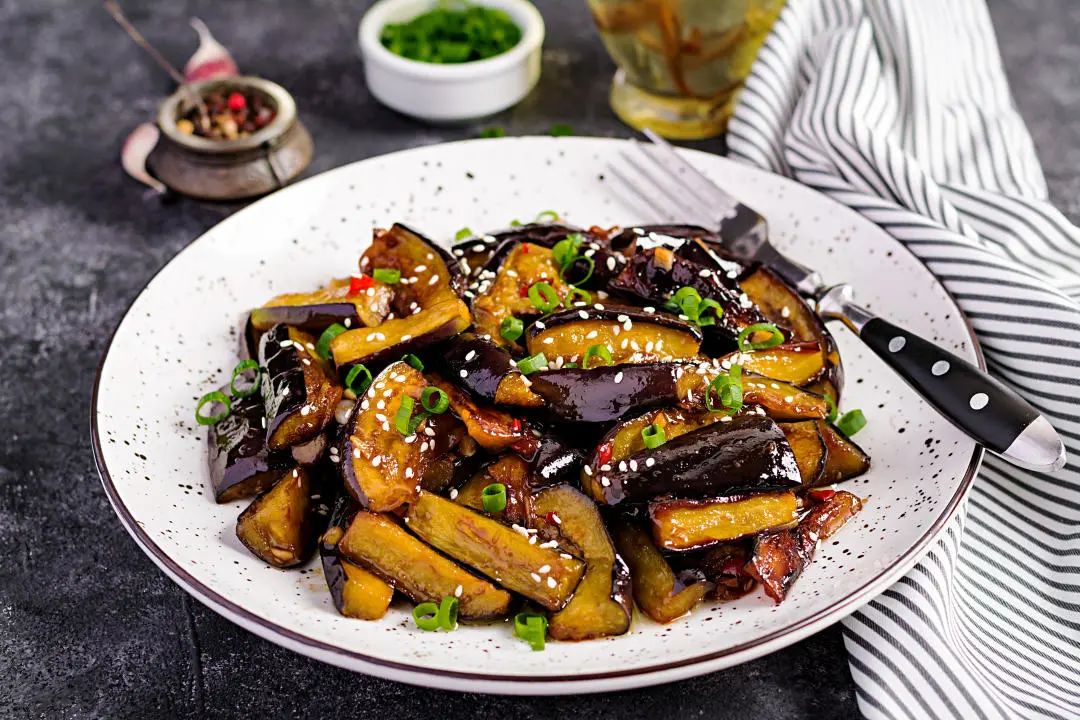
Pediatric Cough Dietary Therapy
1. Lily Honey: Lily contains starch, protein, fat, various alkaloids, calcium, phosphorus, iron, etc., with cough-relieving effects. When combined with honey, its lung-moistening and thirst-quenching effects are enhanced. This is particularly effective for treating chronic bronchitis and dry cough in infants, especially coughs accompanied by constipation after autumn. Ingredients: 60g lily, 30g honey.
Preparation: Wash and dry the lily, mix with honey, place in a porcelain bowl, and steam in boiling water until cooked. Characteristics: Light and sweet, can be used as a snack for children. 2. Walnut Duck: Duck meat is sweet, salty, and slightly cool, capable of nourishing yin, benefiting blood, and clearing deficiency heat. Duck meat is rich in protein, fat, calcium, phosphorus, iron, and vitamins, beneficial for health. Walnuts are sweet, warm, capable of nourishing the kidneys, moistening the intestines, and rich in fat and protein. This dish is effective for treating infants and young children with kidney deficiency and chronic cough. Ingredients: 200g walnuts, 150g water chestnuts, 1 old duck, 100g chicken puree, 1 egg white, a little scallion, ginger, salt, and MSG, appropriate wet starch and peanut oil. 3. Radish Honey Drink: Radish is spicy, sweet, and cool, with effects of clearing heat, generating fluids, cooling blood, stopping bleeding, resolving phlegm, and stopping cough, with strong antibacterial properties; ginger is commonly used to dispel wind-cold and stop vomiting. Jujubes are often used to harmonize the stomach and nourish blood; honey moistens dryness and stops cough. This drink can disperse cold, promote lung function, and stop cough. It is effective for treating colds and coughs, especially those caused by wind-cold. Ingredients: 1-3 slices of white radish, 3 small slices of ginger, 3 jujubes, 30g honey.
Preparation: Boil the radish slices, ginger slices, and jujubes in appropriate water for about 30 minutes, strain, add honey, and boil again to finish. Characteristics: Sweet and fragrant, with a slight ginger spiciness. 4. Loofah Congee: Loofah contains saponins, loofah bitter compounds, cucurbitacin, wood polysaccharides, fat, protein, vitamins B and C, with a sweet taste and cool nature, capable of clearing heat, cooling blood, detoxifying, and when cooked with japonica rice and dried shrimp, has effects of clearing heat, harmonizing the stomach, and resolving phlegm. It is effective for treating chronic bronchitis, cough, and sore throat. Ingredients: 500g loofah, 100g japonica rice, 15g dried shrimp, appropriate ginger and scallions.
Preparation: 1. Wash the loofah, remove the pulp, and cut into pieces; wash the japonica rice. 2. In a pot, add water, bring to a boil, add the washed japonica rice to cook congee, and when almost done, add loofah pieces and dried shrimp, and boil until flavored. Characteristics: The congee is soft, fragrant, and flavorful.
5. Snow Pear Stewed with Rock Sugar: Pears moisten the lungs, clear heat, generate fluids, and quench thirst, and when used with rock sugar, enhance the moistening and cough-relieving effects, suitable for treating children’s dry cough, dry lips, and throat. Ingredients: 1-2 snow pears, 30-60g rock sugar. Preparation: Peel and core the snow pears, place with rock sugar in a porcelain bowl, and steam until the sugar dissolves. Characteristics: Eating pears and drinking the syrup is light and sweet, appealing to children.

Pediatric Constipation Dietary Therapy
1. Fried Sweet Potato: This dish aids digestion, helps absorb nutrients, accelerates metabolism, and promotes intestinal peristalsis, relieving constipation and providing energy. Suitable for children under 3 years old. Ingredients: 500g sweet potato, 250g sugar, 15g oil, 10g goji berries, 100g raisins. Preparation: 1. Wash the sweet potato, cut into chunks, and fry until golden brown. 2. Heat a pan with a little oil, add sugar to melt, and caramelize until golden brown, then immediately add the fried sweet potato, along with goji berries (steamed) and raisins, stir quickly, and serve immediately. The time between frying the sweet potato and adding it to the sugar pan should not be too long to avoid cooling and affecting the taste. It is better to do both processes simultaneously.
2. Red Bean Congee: Red beans are rich in nutrition and have certain medicinal value, nourishing blood, promoting blood circulation, and warming the stomach. The “Golden Sweet Potato Record” states that red beans can treat “dysentery with blood, heat accumulation, and other conditions.” Red beans contain carbohydrates, rough fiber, calcium, phosphorus, iron, and vitamins A and C, and their protein content is higher than that of rice and white flour. Therefore, eating red beans serves both food and medicine. Children with constipation can improve after a few servings. Ingredients: 250g fresh red beans, 60g japonica rice, appropriate sugar. Preparation: Wash the red beans (preferably red skin and yellow heart), cut into small pieces, and cook with water and japonica rice to make a thin congee, adding sugar to taste before serving. Characteristics: Sweet, delicious, and easy to digest.
3. Honey Milk Sesame Pudding: Honey is sweet, neutral, capable of nourishing the middle, moistening the lungs, and detoxifying; sesame is sweet, neutral, beneficial for the liver and kidneys, nourishing blood, and moistening the intestines; milk is rich in nutrition, also beneficial for the stomach and moistening dryness. The combination of these three can harmonize the stomach, nourish blood, and promote intestinal peristalsis, making it very effective for treating infants with chronic illness and constipation. It is best taken on an empty stomach every morning. Ingredients: 15-30g honey, 100-200g milk, 10-20g sesame.
Preparation: First, wash and dry the sesame, fry until cooked, grind into fine powder, then boil the milk, mix in honey, and finally add the sesame powder to mix well. Characteristics: Soft, sweet, and fragrant, suitable for infants and children.
4. Mulberry and Cistanche Soup: Mulberries are sweet, slightly cold, nourishing yin, nourishing blood, and promoting intestinal peristalsis, containing glucose, fructose, tannins, vitamins B and C; Cistanche is sweet and salty, warm, oily, and has the effect of moistening the intestines. The combination of these two can nourish the kidneys, moisten the intestines, and nourish blood, effective for children with weakness, blood deficiency, and dry intestines leading to constipation. Can be taken in the morning and evening, in appropriate amounts. Ingredients: 20g mulberries, 15g Cistanche, 10g black sesame, 6g fried bitter orange peel.
Preparation: Wash the mulberries, and cook with Cistanche, black sesame, and bitter orange peel in a pot, first boiling on high heat, then simmering for about 1 hour. Characteristics: The soup is fresh and slightly sweet, nourishing without being greasy.
5. Snow Pear Stewed with Luo Han Guo and Chuan Bei: This dish moistens the lungs, cools the heart, resolves phlegm, reduces fire, detoxifies, lowers blood pressure, calms, clears heat, stops cough, and promotes intestinal peristalsis, effective for tracheal and throat diseases, especially for enteritis and constipation. Ingredients: 500g snow pear, Luo Han Guo, and Chuan Bei, a little rock sugar, 20g honey, about 1000g water. Preparation: 1. Peel and core the snow pear, cut into small pieces; wash Luo Han Guo, remove the shell; wash Chuan Bei. 2. Place snow pear pieces, Luo Han Guo, and Chuan Bei in a small bowl, add rock sugar, honey, and 1000g water, mix well, and steam for 1 hour. Do not add too much rock sugar, as honey is already included, and crush the rock sugar into small pieces for better mixing.
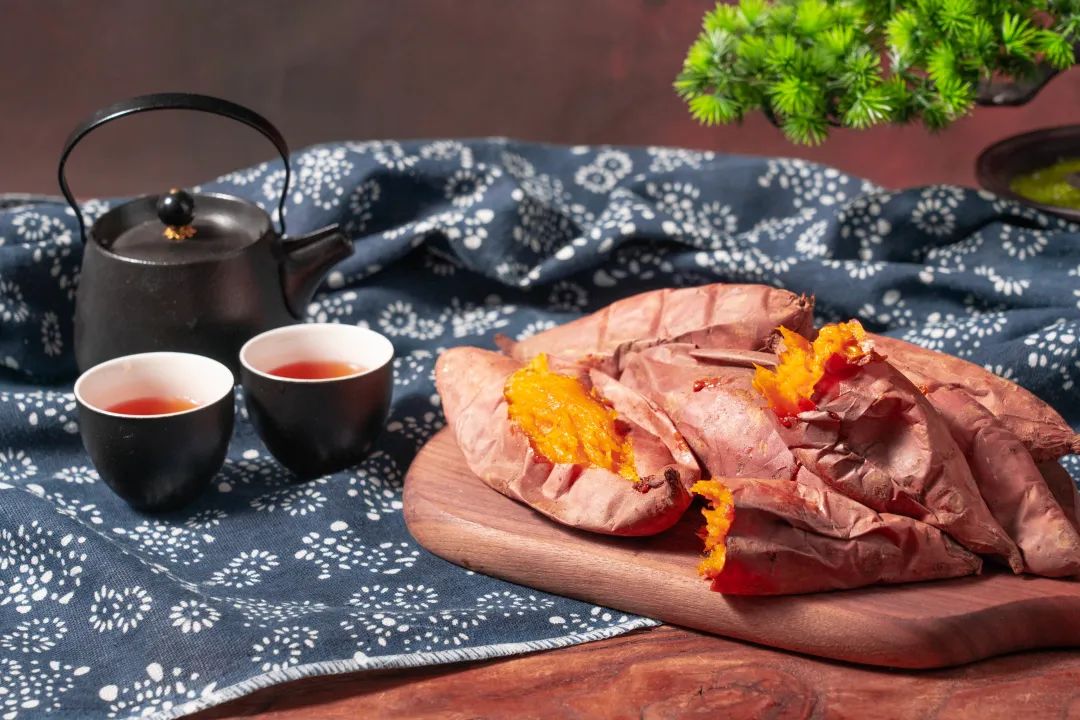
Pediatric Heat Stroke Dietary Therapy
1. Kudzu Root Congee: Kudzu root is spicy, sweet, and neutral, with effects of relieving summer heat, clearing heat, and generating fluids. Kudzu root mainly contains puerarin, xylosides, and soybean flavonoids, with significant detoxifying effects. Cooking with japonica rice can reduce its cold and slippery effects, prolong its efficacy, and achieve the effects of clearing the stomach, nourishing yin, and generating fluids. For children with summer heat, excessive thirst, and frequent eating and drinking, consuming this congee can promote smooth bowel movements and alleviate symptoms. Ingredients: 40g fresh kudzu root, 100g japonica rice. Preparation: 1. Wash the kudzu root, slice, add water to grind into a powder, let it settle, remove the water, and keep the powder. The kudzu root powder should be fine; otherwise, it will affect the quality of the congee. 2. Wash the japonica rice, place in a pot with water, boil, and when half-cooked, add the kudzu powder, and continue cooking until it becomes a thin congee. Characteristics: This congee has no strange taste and is slightly sweet.
2. Lotus Leaf Drink: Lotus leaf is bitter, neutral, and aromatic, capable of clearing summer heat, containing alkaloids and lotus alkaloids, which can directly dilate blood vessels, thus clearing heat and relieving summer heat. Sweetening with sugar enhances its effects of clearing heat, nourishing yin, and awakening the stomach. It is effective for children with summer heat, fatigue, loss of appetite, excessive thirst, and thick tongue coating. Take once daily for several days to see results. Ingredients: 100g fresh lotus leaves, 100g honey or white sugar. Preparation: Wash fresh lotus leaves, add water to a pot, add lotus leaves, boil and simmer until the soup is concentrated, then add honey or sugar and boil again to finish. Using fresh lotus leaves yields better results and flavor. If the lotus leaf drink is frozen in the refrigerator, it can enhance its heat-clearing effects.
Characteristics: The drink has a fragrant lotus leaf aroma, sweet and pleasant, making it a favorite among children. 3. Cucumber Honey Strips: Cucumbers are sweet, cool, capable of clearing heat, quenching thirst, promoting urination, and detoxifying. They contain sugars, glycosides, caffeic acid, green acid, various amino acids, and vitamins B1, C, and volatile oils (bitter components), rich in nutrients. Honey moistens dryness and detoxifies, also serving as a flavoring agent. This dish is suitable for infants and young children experiencing summer heat, excessive thirst, and difficulty urinating, and can also be used for mild cases of damp-heat diarrhea. Ingredients: 1500g cucumber, 100g honey. Preparation: Wash the cucumbers, remove the stems, cut into strips, place in a pot with a little water, boil, remove the soup, and while hot, mix in honey to taste, then boil again to finish. Characteristics: Light and sweet, appealing to children.
4. Bitter Melon Congee: Bitter melon is bitter, cold, capable of relieving heat and summer heat, nourishing yin, and benefiting the stomach, suitable for children with summer heat symptoms and excessive thirst, or those with red eyes and short urination. Ingredients: 100g bitter melon, 60g japonica rice, 100g rock sugar. Preparation: 1. Wash the bitter melon, cut into small pieces; wash the japonica rice. 2. In a pot, add water, bring to a boil, add japonica rice and bitter melon to cook congee, and when the congee is half-cooked, add rock sugar, and cook until dissolved. Characteristics: The congee has a slightly bitter taste, which can be removed by adding rock sugar.
5. Mai Dong Congee: Mai Dong is sweet, slightly bitter, and slightly cold, with effects of moistening the lungs, stopping cough, benefiting the stomach, and clearing the heart, containing glucose, fructose, sucrose, and vitamins A. It can be used for children to relieve heat, clear inflammation, stop cough, and strengthen the heart, especially suitable for infants during summer heat. Ingredients: 30g Mai Dong, 100g japonica rice, appropriate rock sugar. Preparation: 1. Wash the Mai Dong, place in a clay pot, add water to extract the juice, and set aside. 2. In another pot, add water, bring to a boil, add washed japonica rice to cook congee, and when half-cooked, add Mai Dong juice and rock sugar, and boil to finish. Characteristics: The congee is thick and sweet, with no strange taste from Mai Dong.
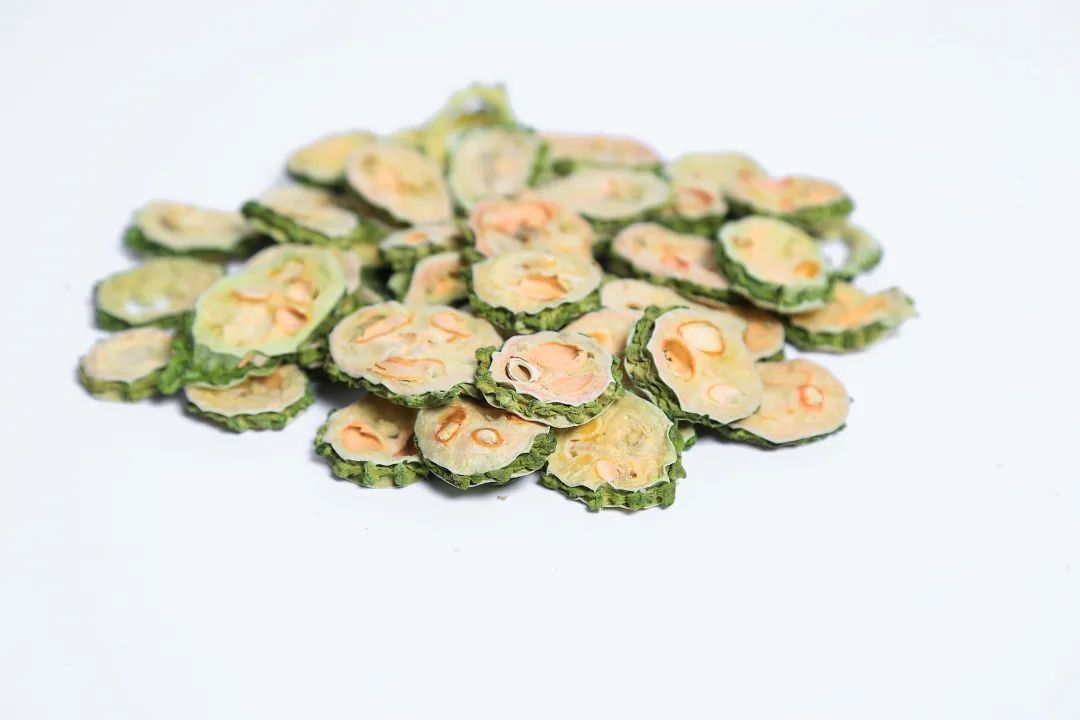
Text/Image Source: Internet. Please delete if infringing.

